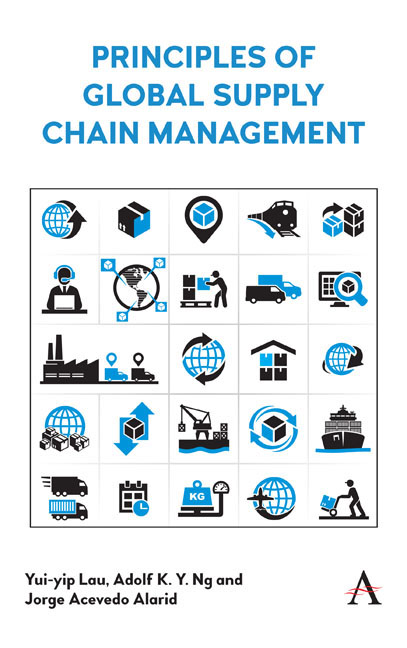Book contents
- Frontmatter
- Contents
- List of Figures
- List of Tables
- Foreword
- Preface
- About the Authors
- 1 Introduction
- 2 Managing Outbound Logistics and Distribution
- 3 Supplier Selection and Procurement
- 4 Warehouse Management
- 5 Case Studies in Food Supply Chains
- 6 Inland Ports in Global Supply Chains
- 7 Climate Change in a Global Environment
- 8 Sustainability in Infrastructure-Based Supply Chains
- 9 Reverse Logistics
- 10 Logistics Associations
- 11 Logistics Education
- 12 Case Exercises in Global Supply Chains
- Appendix
- Index
6 - Inland Ports in Global Supply Chains
- Frontmatter
- Contents
- List of Figures
- List of Tables
- Foreword
- Preface
- About the Authors
- 1 Introduction
- 2 Managing Outbound Logistics and Distribution
- 3 Supplier Selection and Procurement
- 4 Warehouse Management
- 5 Case Studies in Food Supply Chains
- 6 Inland Ports in Global Supply Chains
- 7 Climate Change in a Global Environment
- 8 Sustainability in Infrastructure-Based Supply Chains
- 9 Reverse Logistics
- 10 Logistics Associations
- 11 Logistics Education
- 12 Case Exercises in Global Supply Chains
- Appendix
- Index
Summary
Due to capacity expansion, environmental considerations, community restrictions and complex supply chain management, an inland port has emerged as a notable actor to connect a hub port and hinterland area. Mexico has demonstrated illustrative examples of inland ports in global supply chains. In this chapter, we will achieve the following objectives:
• understand a movement from a traditional supply chain with a lot of middlemen to a cheaper supply chain that is reliable and agile, without middlemen, to achieve direct benefits for Mexican producers;
• explore different types of inland ports around the world;
• analyze investment that recognizes the affordability issue of the current fresh produce supply chain system, its markets and warehouse storage, and how it does not displace that system with unaffordable rental levels;
• create new value chains through the introduction of business processing and technical business support facilities; and
• underpin the development of free trade negotiations (consortium) by delivering safer, low cost and higher quality products and promote supply chain infrastructure and use of the Centre Port partners.
Introduction
A supply chain is a series of organizations that interact with one another in order to bring products (goods or services) to the final consumer. Typically a supply chain includes customer or consumer, retail or retail stages, merchants or distributors, manufacturers or manufacturers and suppliers, among others (Chan et al., 2012; Tang and Lau, 2013; Lau et al., 2018).
One of the main purposes of managing supply chains is the coordination and improvement of interorganizational processes. The world's bestrecognized definitions come from the Council of Professional Supply Chain Management, formerly known as the Council of Logistics Management.
Before the 1990s, companies were oriented to managing their internal processes, but as the approach to supply chain management emerged, the emphasis shifted to managing interorganizational processes, which went beyond the boundaries of one's own institution.
In an integrated supply chain approach, organizations realize that they need to include not only their suppliers and customers, but also third- party service providers (intermediary and service providers) to identify and improve their critical processes, in such a way that can be gained collaboratively through synergies, in order to meet customer requirements at a lower cost, with greater quality and speed (Figure 6.1).
- Type
- Chapter
- Information
- Principles of Global Supply Chain Management , pp. 87 - 100Publisher: Anthem PressPrint publication year: 2019



